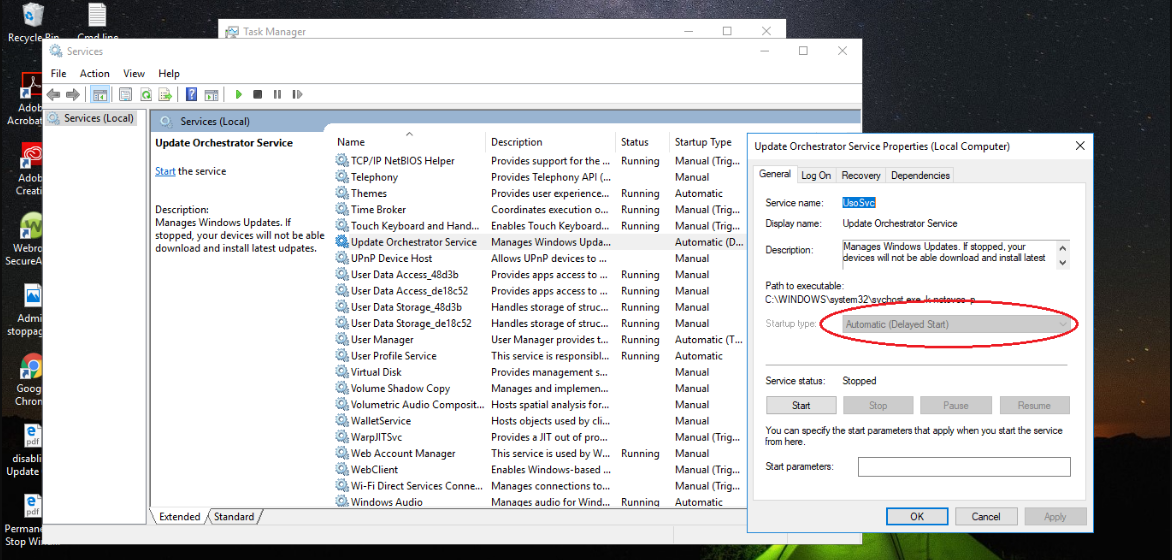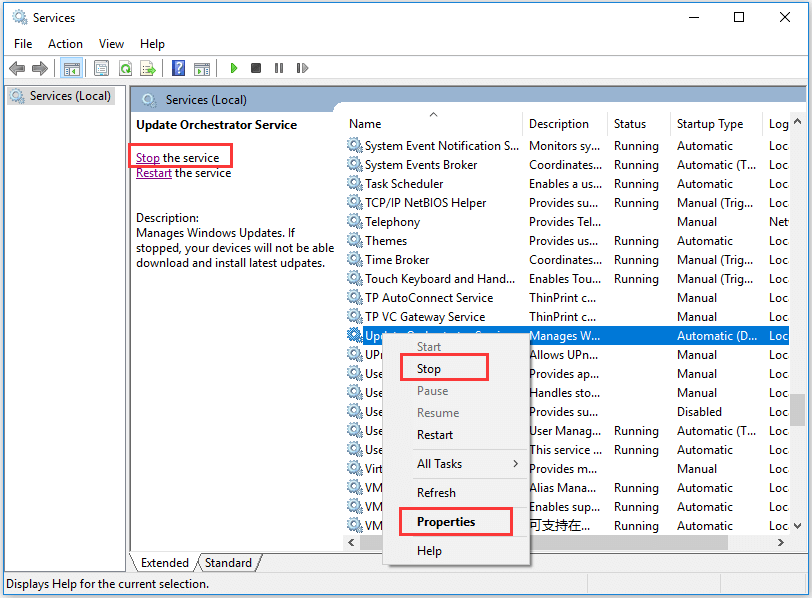
services.msc) then Startup Type can be changed using the registry. If there are some permissions denied in Service Manager (aka. Security is managed through HKEY_LOCAL_MACHINE\SYSTEM\CurrentControlSet\Services\SERVICE_NAME\Security and RequiredPrivileges registry. So if you don't know what the registry does I recommend not to mangle with registry and services.Īll Windows services have some security to control their permissions and user interactions.

Changing the registry may cause problems with Windows Update and associated services. Can anyone help?ĭisclaimer: The Update Orchestrator Service is tied to Windows Update. I have already disabled start-up of wuauserv and the trustedinstaller. I am looking for a way that does not include permanent deletion of the service. Is there any way to either a) access the UsoSvc and change access the start-up property to disabled and eliminate the scheduled tasks, or b) access my computer with the LocalSystem account? Upon boot there is no option to click "other users…" at the start up screen to type in the computer name\localsystem. The computer is not on a domain, it's my home system.

Accessing through the Services manager shows a grayed out box where start-up properties are. I am denied access to the service through system error 5. I find that even using an elevated administrator account (activated through the command line) and running command line through the "Run As: Admin" with sc config UsoSvc start= disabled. I need complete control over when and how I update in order to ensure each patch is compatible. UsoSvc because I am running several scientific analysis programs (Biochemistry) that are required for work but may be broken with future Windows updates. I need to disable Update Orchestrator Service aka. In this case, you can click Stop to stop the service, but you can't change the startup type.I'm on build 1803 of Windows 10 Home. Note that this is almost always temporary if Windows Update is checking for, or installing updates.

You may have stumbled onto this service because it's using a lot of CPU or memory. You might need to repair Windows Updates with DISM. You may also run into an error stating that the Update Orchestrator Service is turned off. Your best bet would be to run the Windows Update troubleshooter. If the Service is not set correctly, you may have a problem with Windows Updates. The default settings for the Update Orchestrator Service (UsoSvc) is Automatic (Delayed Start) and Running. TIP: Hard to fix Windows Problems? Repair/Restore Missing Windows OS Files Damaged by Malware with a few clicks


 0 kommentar(er)
0 kommentar(er)
